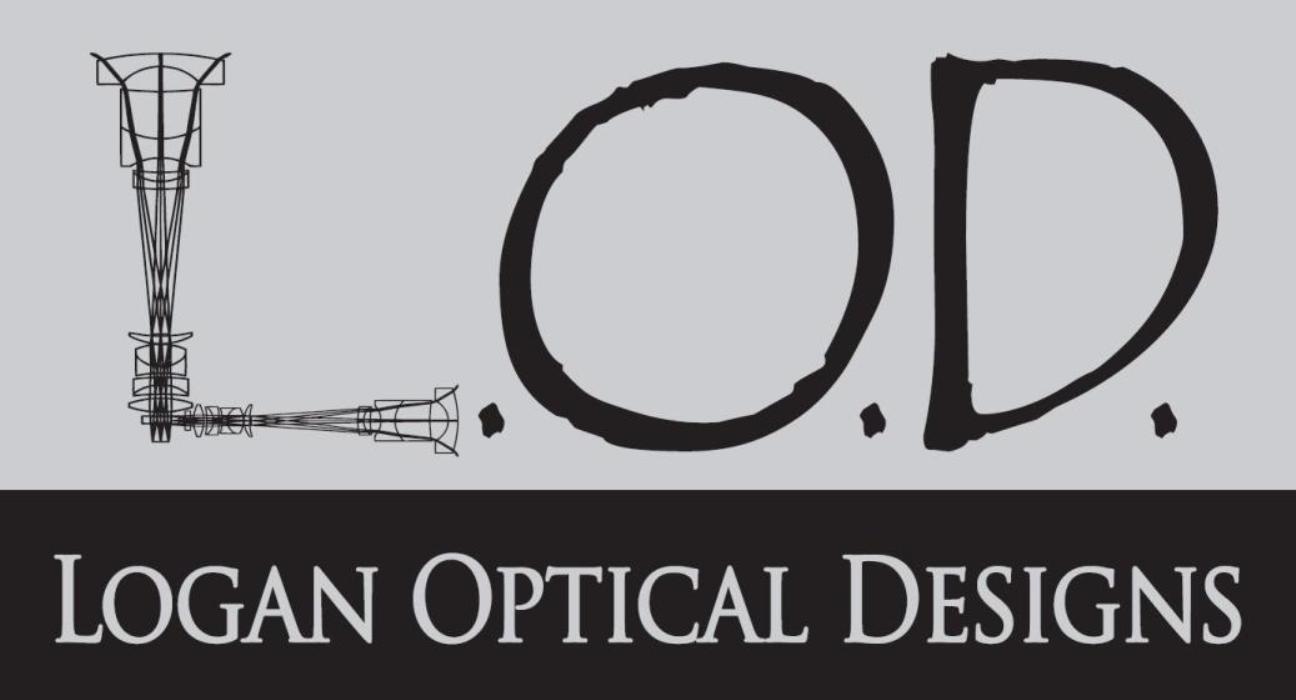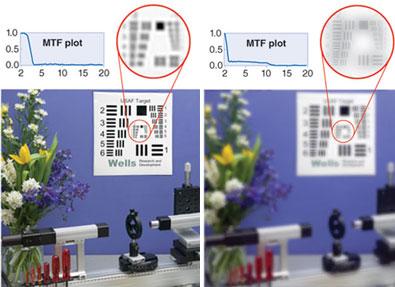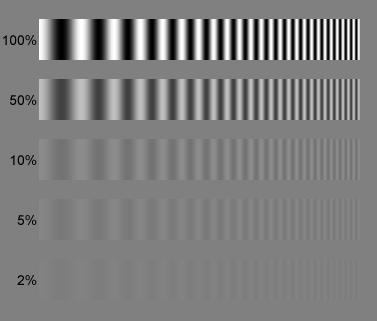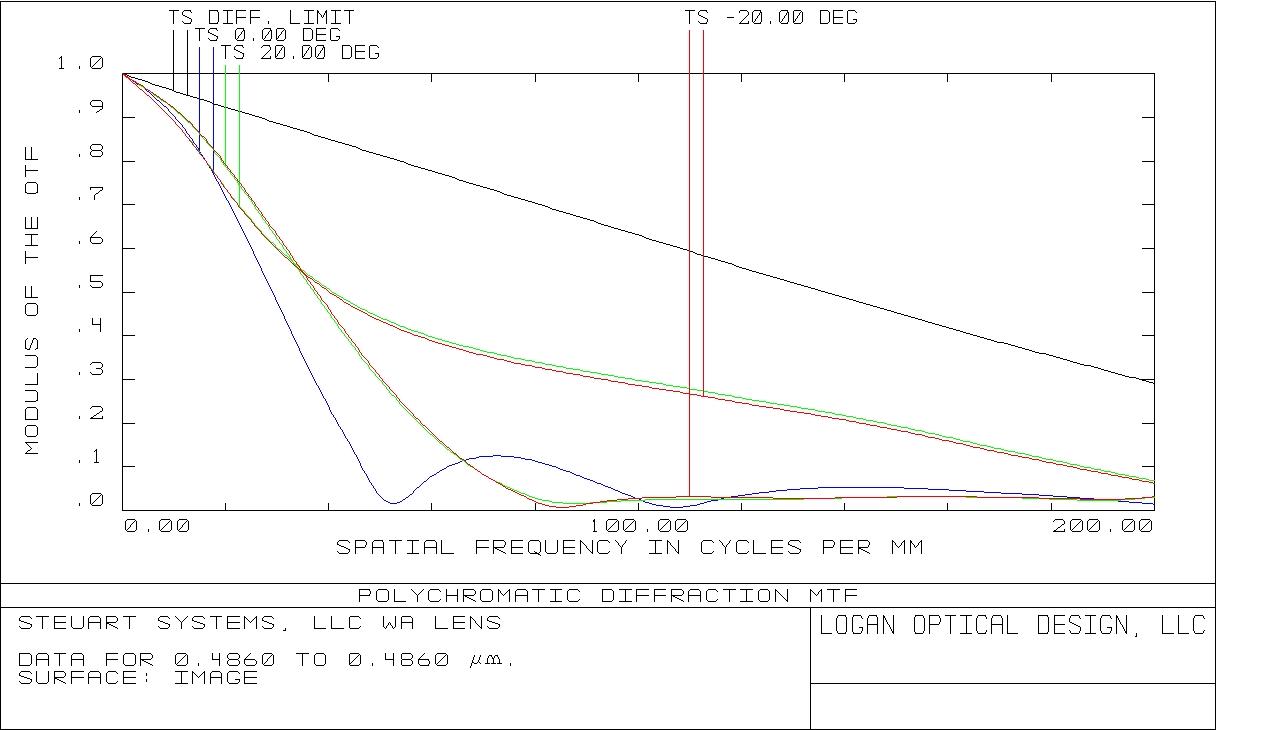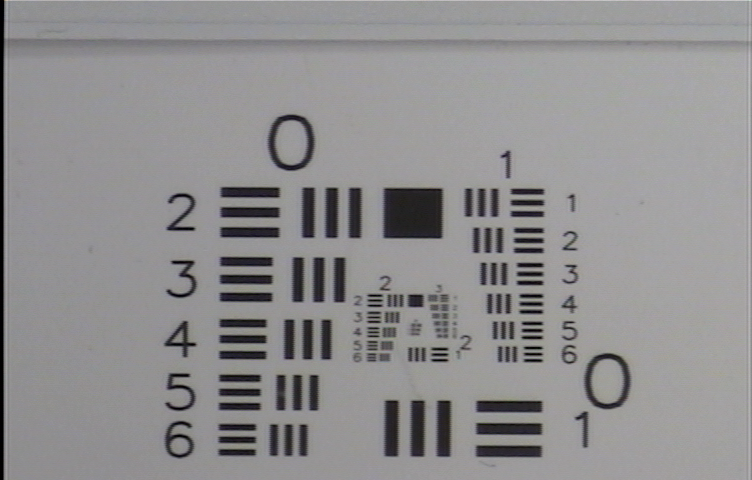Below is a tutorial on modulation transfer functions (MTF) and how to measure the MTF of an optical system.
The modular transfer function (MTF) is a measure of contrast versus spatial frequency. Full contrast, 100%, is an unattenuated pattern of a given spatial frequency or line pair. The MTF plot is typically normalized at 1 or 100% unattenuated contrast (vertical axis), while the horizontal axis is the dependent variable spatial frequency normally in units of lines/mm. The figure below gives an illustration of how the image degrades with decreasing contrast
Figure 1: Image of degrading line pairs with decreasing contrast.
The next figure shows a MTF chart for a typical system.
Figure 2: This is a MTF plot showing the MTF for each field angle (0░, 20░, -20░).
The MTF figure shows a fairly straight black line (top line), which represents a diffraction limited or ideal design MTF performance. Due to diffraction, from light scraping on the lens limiting aperture, there is limited contrast performance that is resolvable - as is observed, the maximum/best resolvable contrast for 200 lines per mm is 30%, and the real contrast gives only ~5% contrast for 200 lines per mm.
A good criterion for excellent optical performance for different camera applications is given:
1. Motion picture camera lenses - 50% MTF at 50 lpm.
2. 35-mm camera lenses - 20% MTF at 30 lpm over the whole field (FOV).
3. 35-mm camera lens on axis - 50% MTF at 30 lpm.
4. Additional aberration criterion for common camera lenses:
a. Distortion <2%.
b. Optical Path Difference (OPD) < 2 waves.
c. Ray Fan < 50Ám.



